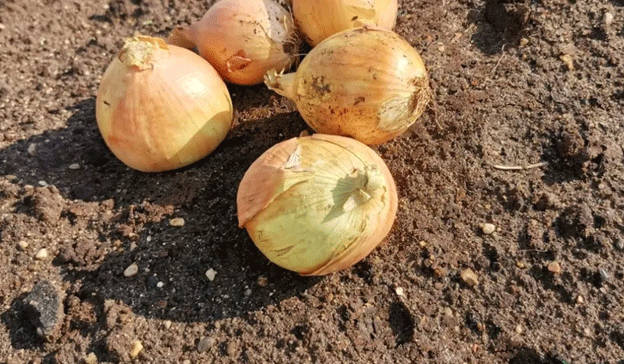The agricultural landscape in Kazakhstan’s Almaty region is changing rapidly as farmers respond to the challenges posed by last year’s onion surplus. During the current harvest season, they have slashed onion planting areas by four times, choosing instead to cultivate other crops like sugar beets, corn, wheat, barley, and alfalfa. This decision was largely influenced by last year’s glut, which left tens of thousands of tons of onions unsold and rotting in storage.
According to local authorities, farmers in the Shengeldy district, one of the hardest-hit areas, have reduced their onion crop to just 500 hectares this year, down from much larger areas in previous seasons. Askar Ybyrayymov, head of the local agriculture department, noted that this significant reduction was necessary to prevent a repeat of the previous year’s losses when onion prices collapsed due to oversupply.
Over the past five years, onion production in Kazakhstan increased by 25%, reaching one million tons annually. However, domestic consumption is only a fraction of that—roughly 285,000 tons—meaning the market was oversaturated. In Shengeldy alone, 22,000 tons of onions remained unsold by the end of the spring, forcing farmers to discard much of the produce.
Strategic Crop Diversification to Avoid Market Dependency
In response to this crisis, many farmers are turning to crop diversification. This year, 8,000 hectares of farmland in the Shengeldy district were utilized, but only a small portion—500 hectares—was dedicated to onions. Farmers are focusing more on other crops that are expected to offer more stable returns.
Bauyrzhan Yetekbayev, the head of one of the largest farms in the region, noted that his farm couldn’t sell 500 tons of onions last year. He stored the crop until May, but the arrival of warmer temperatures caused the onions to spoil, resulting in significant losses. This season, his farm has drastically reduced its onion planting to just 20 hectares and secured contracts with retailers and local agricultural cooperatives to ensure the sale of their 200-ton harvest.
Farmers in the region now aim to harvest approximately 22,000 tons of onions this season. The average expected yield is about 50 tons per hectare, using high-quality Dutch and Japanese onion varieties. Despite the reduction in planting, farmers remain optimistic, citing pre-arranged supply agreements that will help prevent the same unsold surplus as last year.
Rising Costs and Decreasing Market Prices
Although farmers have been able to strike deals with buyers, they are facing rising production costs, particularly for packaging and labor. The price of packaging nets has increased from 40 to 50 tenge per unit, while labor costs for sorting and packing onions have also risen. Workers are now paid 200 tenge per bag for sorting and packaging.
However, onion prices on the wholesale market have remained low, with farmers currently selling at around 75-80 tenge per kilogram. As market prices continue to decrease, managing costs becomes increasingly crucial for farmers hoping to turn a profit.
Diversification as a Strategy for Stability
Farmers in Kazakhstan’s Almaty region are moving towards diversification to mitigate the risks of market volatility. By reducing their dependence on a single crop and shifting to sugar beets, wheat, and other crops, they aim to avoid the financial devastation caused by last year’s oversupply. The success of this strategy depends heavily on securing reliable sales channels and managing rising input costs, but farmers remain hopeful that these changes will bring more stable and profitable outcomes in the future.

